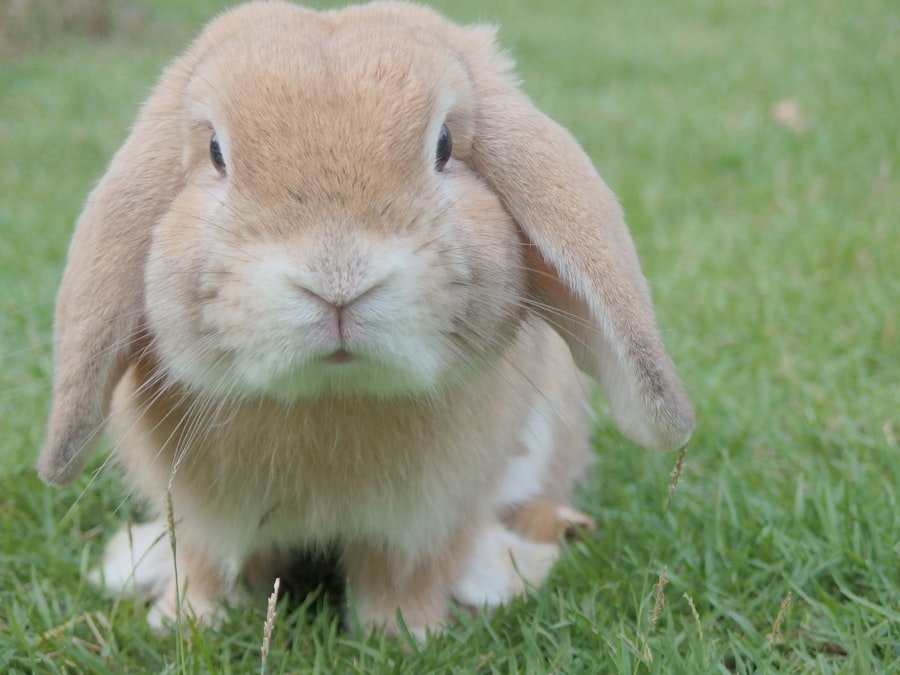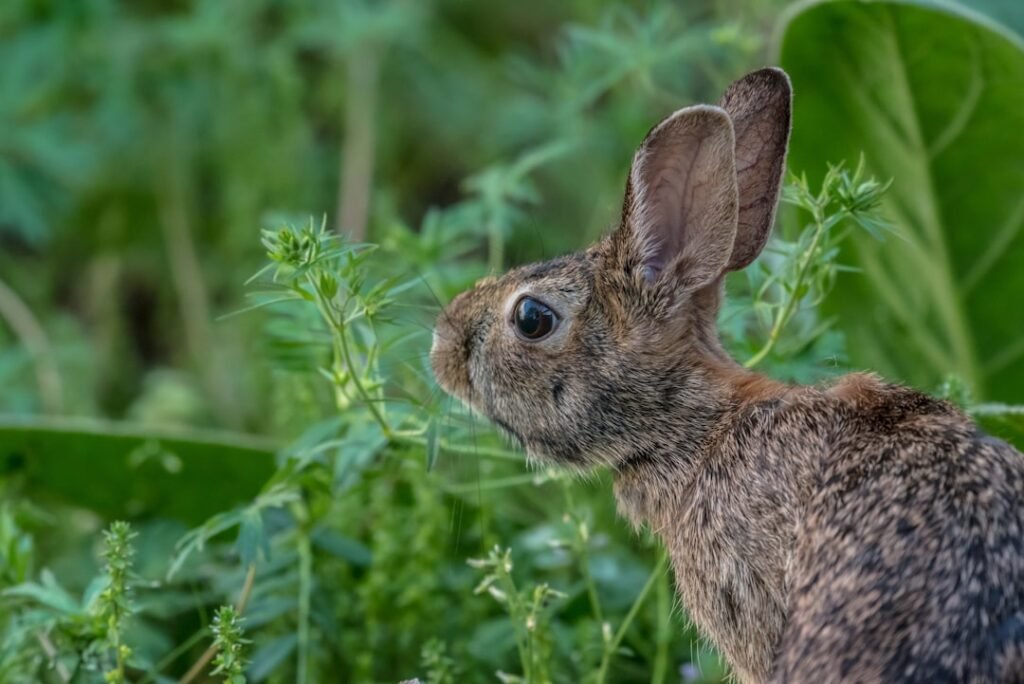Lop bunnies, also known as lop-eared rabbits, are a popular breed of domestic rabbits known for their distinctive floppy ears. They have a rich history dating back to the 18th century when they were first bred in Europe. Lop bunnies come in various sizes and colors, but they all share the characteristic lop ears that hang down on the sides of their heads.
In addition to their unique physical appearance, lop bunnies also have distinct behavioral traits. They are known to be friendly, social, and intelligent animals. Lop bunnies are often described as being more laid-back and relaxed compared to other rabbit breeds. They enjoy human companionship and can form strong bonds with their owners.
Key Takeaways
- Lop bunnies have unique characteristics and behaviors that require specific care and attention.
- Creating a safe and comfortable home for your lop bunny involves providing adequate space, bedding, and hiding spots.
- A nutritious diet is essential for your lop bunny’s optimal health, including hay, fresh vegetables, and limited pellets.
- Grooming your lop bunny regularly helps maintain a clean and healthy coat, including brushing and nail trimming.
- Common health issues for lop bunnies include dental problems and gastrointestinal issues, which can be prevented with proper diet and care.
Creating a Safe and Comfortable Home for your Lop Bunny
When bringing a lop bunny into your home, it is important to create a safe and comfortable living space for them. This starts with choosing the right cage or enclosure. Lop bunnies need plenty of space to move around, so it is recommended to provide them with a large cage or a bunny-proofed room where they can roam freely.
Inside the living space, it is important to provide toys and enrichment for your lop bunny. Rabbits are naturally curious animals and need mental stimulation to prevent boredom. Toys such as tunnels, chew toys, and puzzle feeders can keep them entertained and prevent destructive behavior.
Feeding Your Lop Bunny: A Nutritious Diet for Optimal Health
A healthy diet is crucial for the overall well-being of your lop bunny. Understanding a rabbit’s digestive system is important when choosing the right food for them. Lop bunnies have sensitive digestive systems and require a high-fiber diet consisting mainly of hay.
Hay should make up the majority of your lop bunny’s diet, as it helps maintain healthy digestion and prevents dental problems. Fresh vegetables and a small amount of pellets can also be included in their diet. It is important to introduce new foods gradually to avoid digestive upset.
Grooming Your Lop Bunny: Tips for Maintaining a Clean and Healthy Coat
| Topic | Description |
|---|---|
| Grooming frequency | Regular grooming is necessary to maintain a healthy coat. Depending on the breed, grooming may be required once or twice a week. |
| Brushing | Brushing helps remove loose fur, dirt, and debris from the coat. Use a soft-bristled brush or comb to avoid damaging the fur. |
| Bathing | Bathing should be done only when necessary, as rabbits are sensitive to water. Use a mild shampoo and rinse thoroughly. |
| Nail trimming | Regular nail trimming is important to prevent overgrowth and discomfort. Use a sharp nail clipper and be careful not to cut the quick. |
| Ear cleaning | Check your rabbit’s ears regularly for signs of infection or mites. Use a damp cloth or cotton ball to gently clean the ears. |
| Eye care | Check your rabbit’s eyes regularly for signs of discharge or infection. Use a damp cloth or cotton ball to gently clean around the eyes. |
| Hairballs | Rabbits are prone to hairballs, which can be dangerous if left untreated. Provide plenty of hay and fresh water to help prevent hairballs. |
Lop bunnies have long, soft fur that requires regular grooming to keep it clean and healthy. Brushing and combing your lop bunny’s fur is important to prevent matting and remove loose hair. Use a soft brush or comb designed for rabbits and gently brush their fur in the direction of hair growth.
Bathing your lop bunny should be done sparingly, as rabbits are generally clean animals and do not require frequent baths. If necessary, use a mild rabbit-safe shampoo and make sure to thoroughly dry your lop bunny afterwards to prevent them from getting chilled.
Nail trimming and ear cleaning are also important aspects of grooming your lop bunny. Regularly check their nails and trim them if they become too long. Cleaning your lop bunny’s ears with a damp cloth can help prevent ear infections.
Lop Bunny Health: Common Health Issues and How to Prevent Them
Like all animals, lop bunnies are prone to certain health issues. It is important to be aware of the signs of illness in lop bunnies so that you can seek veterinary care if necessary. Signs of illness may include changes in appetite, lethargy, diarrhea, or respiratory problems.
Common health issues in lop bunnies include dental problems, gastrointestinal stasis, and respiratory infections. Dental problems can occur if their teeth become overgrown, leading to difficulty eating. Gastrointestinal stasis is a condition where the digestive system slows down or stops working properly, often caused by a lack of fiber in the diet or stress. Respiratory infections can occur if your lop bunny is exposed to drafts or has poor ventilation in their living space.
Preventative measures such as providing a proper diet, regular exercise, and a clean living environment can help prevent these health issues. It is also important to schedule regular check-ups with a rabbit-savvy veterinarian to ensure your lop bunny’s health.
Lop Bunny Exercise: Keeping Your Furry Friend Active and Happy

Exercise is essential for the physical and mental well-being of your lop bunny. Lop bunnies are active animals and need plenty of opportunities to hop, run, and explore. Providing both indoor and outdoor exercise options can help keep your lop bunny active and happy.
Indoor exercise can be achieved by creating a bunny-proof play area where your lop bunny can roam freely. Remove any potential hazards such as electrical cords or toxic plants, and provide toys and tunnels for them to play with. Supervise your lop bunny during playtime to ensure their safety.
Outdoor exercise can be provided in a secure, fenced-in area. Make sure the area is free from predators and toxic plants. Always supervise your lop bunny while they are outside to prevent escapes or injuries.
Litter Training Your Lop Bunny: A Step-by-Step Guide
Litter training your lop bunny can make cleaning up after them much easier and keep their living space clean. Start by choosing the right litter box and litter. A litter box with low sides is recommended for lop bunnies, as they may have difficulty hopping in and out of high-sided boxes.
Place the litter box in a corner of their living space where they tend to eliminate. Fill the litter box with rabbit-safe litter such as paper-based or wood pellet litter. Avoid using clumping cat litter, as it can be harmful if ingested.
To train your lop bunny to use the litter box, observe their behavior and place any droppings or urine-soaked bedding in the litter box. Encourage them to use the litter box by placing some hay or treats inside. Be patient and consistent with the training process, and reward your lop bunny with praise or treats when they use the litter box correctly.
Socializing Your Lop Bunny: Bonding with Your Furry Friend
Socialization is important for lop bunnies to develop a bond with their owners and feel comfortable in their environment. Spend time with your lop bunny every day, talking to them and gently petting them. This will help them become accustomed to your presence and build trust.
Bonding techniques such as hand-feeding treats or grooming your lop bunny can also help strengthen the bond between you. Be patient and allow your lop bunny to approach you on their own terms. Avoid forcing interactions or picking them up if they are not comfortable with it.
If you have other pets in the household, it is important to introduce your lop bunny to them gradually and under supervision. Allow them to sniff each other through a barrier before allowing direct contact. Always monitor their interactions to ensure the safety of all animals involved.
Traveling with Your Lop Bunny: Tips for a Safe and Stress-Free Trip
If you need to travel with your lop bunny, it is important to take certain precautions to ensure their safety and minimize stress. Before traveling, make sure your lop bunny is comfortable in their carrier by gradually introducing them to it and providing treats or toys inside.
Choose a carrier that is well-ventilated, secure, and large enough for your lop bunny to move around comfortably. Line the carrier with bedding or a towel for added comfort.
During the trip, keep the carrier secure and avoid sudden movements or loud noises that may startle your lop bunny. Provide fresh water and hay for them to nibble on during the journey. If the trip is long, plan for regular breaks to allow your lop bunny to stretch their legs and use the litter box.
Saying Goodbye to Your Lop Bunny: Coping with the Loss of a Beloved Pet
Saying goodbye to a beloved pet can be a difficult and emotional experience. It is important to allow yourself time to grieve and process your feelings. Reach out to friends, family, or support groups who can provide comfort and understanding during this time.
Memorializing your lop bunny can be a way to honor their memory. Planting a tree or creating a garden in their honor can provide a sense of closure and serve as a lasting tribute. You may also consider creating a photo album or scrapbook of memories with your lop bunny.
If you find it difficult to cope with the loss of your lop bunny, consider seeking professional grief support. There are counselors and therapists who specialize in pet loss and can provide guidance and support during this challenging time.
In conclusion, lop bunnies are unique and lovable pets that require proper care and attention. By understanding their characteristics and behavior, creating a safe and comfortable home, providing a nutritious diet, grooming regularly, monitoring their health, providing exercise and socialization, training them to use a litter box, traveling safely, and coping with the loss of a beloved pet, you can ensure that your lop bunny lives a happy and fulfilling life as part of your family.


